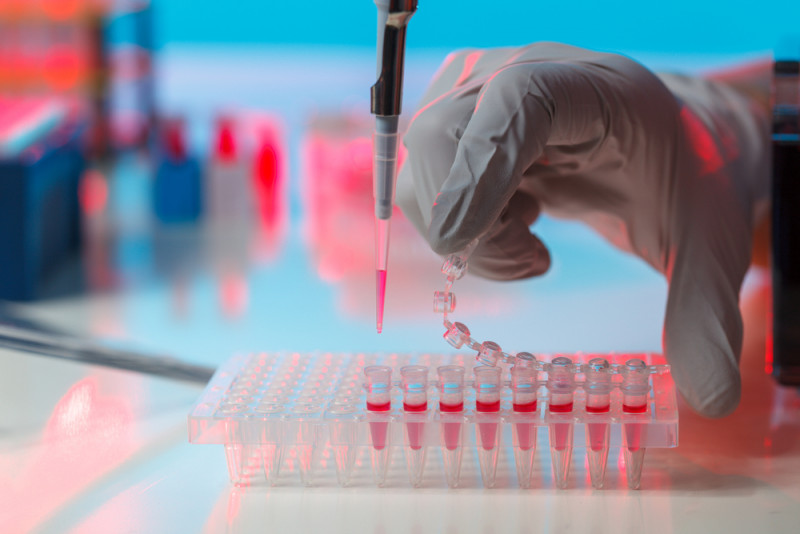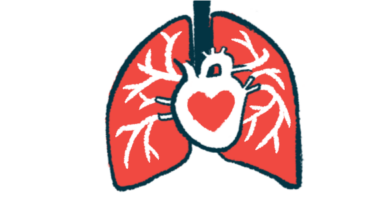Chemokine Levels in Blood May Mark Risk, Likely Course of IPAH

luchschenF/Shutterstock
Certain chemokines — signaling molecules that attract white blood cells to sites of infection — may be blood markers of both a person’s risk of idiopathic pulmonary arterial hypertension (PAH) and this disease’s likely course in a patient, a study found.
PAH is considered idiopathic when its cause is unknown or unclear.
The study, “Potential of C-X-C motif chemokine ligand 1/8/10/12 as diagnostic and prognostic biomarkers in idiopathic pulmonary arterial hypertension,” was published in The Clinical Respiratory Journal by researchers in China.
As a rare disease, an idiopathic PAH diagnosis can take time, and many patients are initially placed in a more advanced World Health Organization (WHO) functional class (ranging from I to IV), meaning their symptoms are likely to worsen and could lead to right heart failure.
“Early diagnosis is critical for improving the prognosis of IPAH [idiopathic PAH] patients,” the researchers wrote. “One solution to solve this issue could be searching for novel biomarkers to predict the risk of IPAH.”
Biological markers, or biomarkers, can provide an adequate picture of a disease’s presence or its likely course.
Certain chemokines of the C-X-C motif chemokine ligand (CXCL) family of proteins play a role in inflammation and blood vessel abnormalities. Scientists know that some of those chemokines, namely CXCL10, CXCL12, and CXCL13, can be at higher-than-usual levels in idiopathic PAH patients — but whether they relate with clinical disease characteristics remains unknown.
Researchers in China focused on CXCL1, CXCL8, CXCL10, and CXCL12. To find a link between chemokine levels and the risk of developing IPAH or of it getting worse, the team analyzed blood samples from 39 patients (mean age of 49.3; 71.8% females) and 40 healthy individuals, serving as controls, who were matched by age and sex.
Among these patients, 21 (53.8%) were classified into WHO class II, indicating symptoms like shortness of breath only when engaged in daily activities like climbing stairs; 16 (41%) into WHO class III, with symptoms that limit daily activities; and two (5.2%) into WHO class IV, indicative of severe symptoms present even at rest.
The mean levels of high-sensitivity C-reactive protein (hsCRP), a marker of inflammation, were about 62% higher in patients than in control individuals. Similarly, the mean levels of CXCL1, CXCL8, CXCL10, and CXCL12 were all higher in these PAH patients than the control group.
Researchers then assessed whether chemokine levels could be used to identify idiopathic PAH. They found that CXCL1, CXCL8, CXCL10, and CXCL12 — alone or in combination — were able to discriminate patients from healthy controls.
“The data showed that all these CXCL family members were elevated in IPAH patients compared with controls, which was in line with several previous studies,” the researchers wrote.
Furthermore, the analysis “showed that all these CXCL family members could predict IPAH risk to some extent, and their combination had good value in predicting IPAH risk.”
Next, the team looked at the clinical characteristics of IPAH. The levels of all chemokines analyzed linked with poorer clinical measures, with CXCL12 showing the strongest link.
CXCL12 correlated positively with WHO functional class, mean pulmonary arterial pressure, pulmonary vascular resistance, and hsCRP — meaning that higher blood levels of this inflammatory chemokine associated with greater pulmonary arterial and vascular resistance, and hsCRP. In contrast, CXCL12 correlated negatively with the distance covered in the six-minute walk test, so that people with higher CXCL12 blood levels did poorer on this test of physical performance.
High CXCL12 levels also associated with worse overall survival. CXCL1, CXCL8, and CXCL10 levels also showed a tendency to negatively correlate with overall survival in these PAH patients, but the results were not statistically significant.
“CXCL12 seemed to possess a more predominant association with unfavorable clinical features of IPAH patients, implying it might be a stronger biomarker,” the researchers wrote, adding that “CXCL12 might be highly associated with the progression of IPAH, and further studies were encouraged to explore that.”
Despite the small number of patients in the study, its results indicate that certain chemokines might serve as blood biomarkers for early diagnosis of idiopathic PAH, the team concluded.
“This study sheds light on the potential of CXCL family members as diagnostic and prognostic biomarkers for IPAH,” they wrote.








